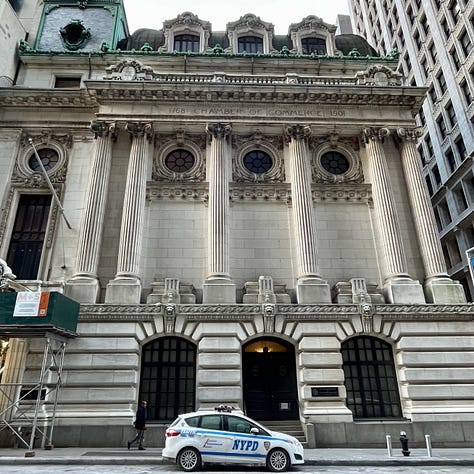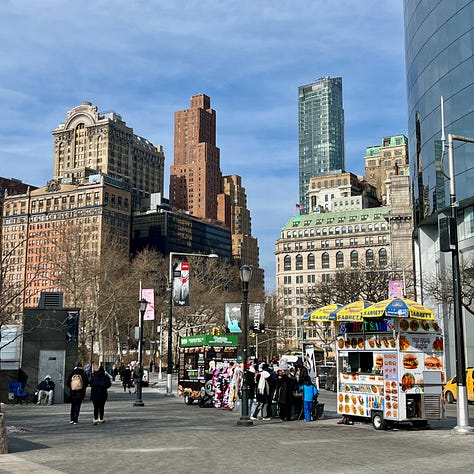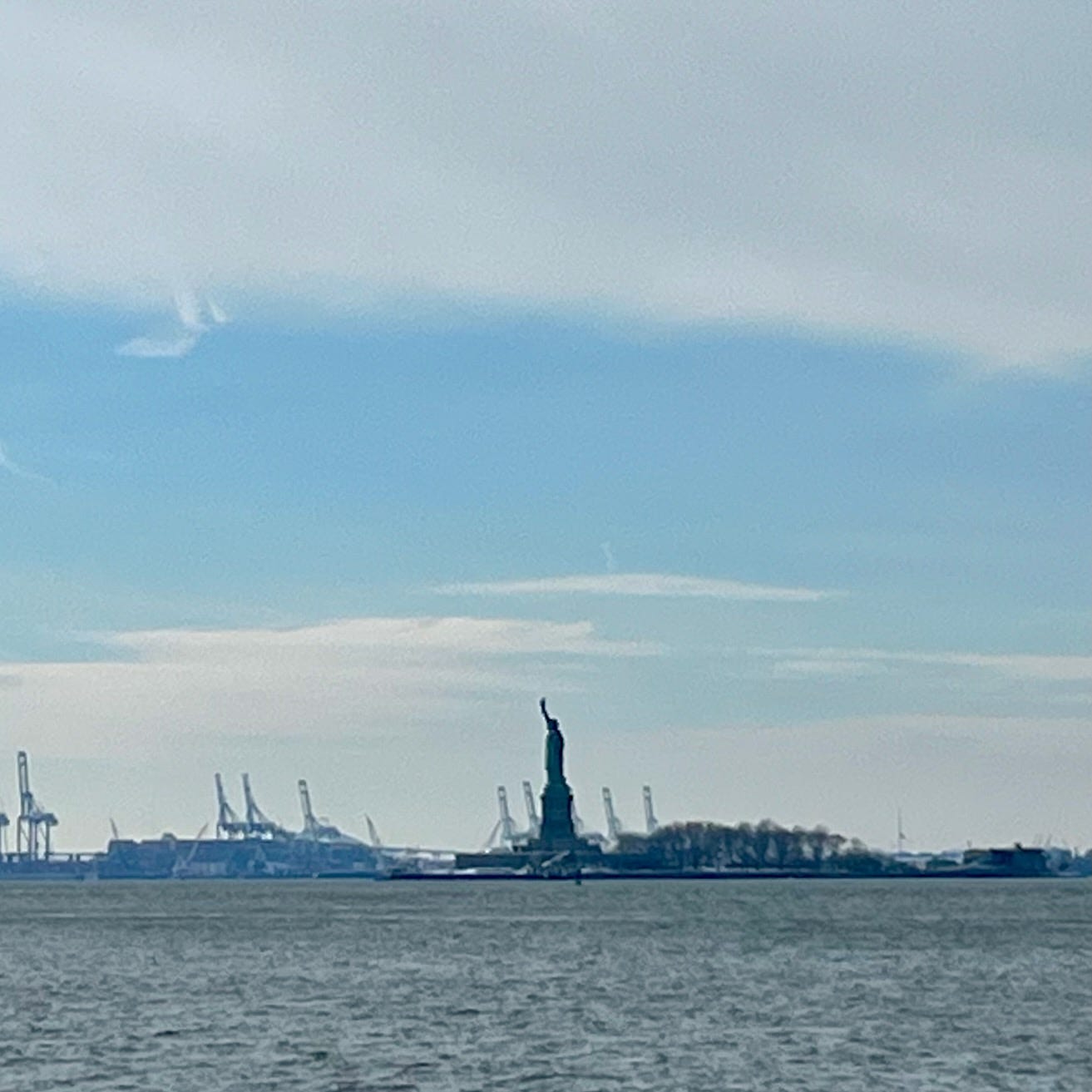Walking & Wandering
(How To) Be a Tourist in My Own City
Austin Kleon wrote ‘be a tourist in your own city’.
When I’ve got a free morning, afternoon or even an entire day, one of my favorite things to do is explore my city. Living in New York City, I could spend countless hours discovering new places and learning about the city’s it’s neighborhoods, history and people.
Now and then I get this feeling, a sudden urge to go somewhere or do something for no particular reason. I’ve realized now that this is (for lack of a better term) the writer’s call, a desire to be out in the world, exploring, learning, observing and to write about it.
Over the weekend I’d re-read the first chapter of Moby-Dick. Ishmael describes why he goes to sea and suggests that a yearning for the sea is in a great many of us:
“There now is your insular city of the Manhattoes, belted round by wharves as Indian isles by coral reefs—commerce surrounds it with her surf. Right and left, the streets take you waterward. Its extreme down-town is the battery, where that noble mole is washed by waves, and cooled by breezes, which a few hours previous were out of sight of land. Look at the crowds of water-gazers there.”
So on a partly cloudy 30 degree Saturday afternoon I left my Brooklyn apartment having no idea where the day would take me. Melville wrote about viewing the sea from ‘the battery’ so I decided to take the J to Broad Street to visit Battery Park.
When I walked up to the cobblestoned street just south of the New York Stock Exchange I realized I was in an area of the city I kew very little about. So I wandered the streets of lower manhattan: Wall Street, Beaver Street, Pearl Street, William Street. I walked curved, narrow streets (laid out long before the city’s grid system) lined with colonial-era buildings flanked by giant office skyscrapers. I walked past Federal Hall, the capitol and meeting place of the first Congress and where George Washington was sworn in as President; Trinity Church where Columbia University was born and where Alexander Hamilton is buried; I walked past the line of tourists waiting to take a photo with the Charging Bull. At Battery Park I explored Castle Clinton which defended New York Harbor from naval attacks.
I’d come to see the sea but due to a coastal resilience construction project a fence was erected around the entire coastline of Battery Park offering nearly zero view of the harbor. I found a spot by the Ellis Island ferry. I waited for the ferry to leave and then snapped a photo.
I walked about five miles throughout the afternoon. Later I sat in a coffee shop and outlined this blog post which is as much a guide for myself as it is for anyone else. When I’m feeling that yearning, a desire for to experience something new, to learn something new, I’ll reference this guide on how to be a tourist in my own city.









Walk and wander.
It’s best to go without a plan so you follow your instincts or wherever the wind takes you. You feel you’re at the whim of some invisible force propelling you from one place to the next. It’s best to go on foot to be on the ground level and to wander aimlessly or with only a loose idea of where you might end up.
Go somewhere new, somewhere you know little about. Go where the crowds aren’t. Go to summer destinations in the winter.
Go by yourself. You can walk at your own pace, stop at your leisure, change directions on a whim without saying a word. This is a restorative time so don’t listen to music or pull out your phone every two seconds (except to take notes or photos).
2. Learn.
Always stop and read the signs, plaques and other historical notes that are spread throughout the city. You never know what you’ll find. Research things which catch your eye or buildings that stand out. Build a visual map in your mind or sketch one out. Research these places later.
3. Bring a camera and notebook.
Taking photos helps you to pay attention to details. How the light lands on a particular building. The tourists lined up to take photos in front of the Bull. A sign which reads: “Airport-style security ahead.” Photography allows you to stand idly in one spot simply observing.
Always bring a notebook and pen to jot things down. Details, conversations, ideas. Sometimes you’ll have an idea for a story or blog post. Write down historical notes, things to research or places to check out next time.
4. Take yourself to lunch.
Give yourself a treat. Have lunch or grab a coffee and snack. You’ve got nowhere to go and nowhere to be. You’re not on a schedule. Enjoy it. This isn’t work but play.
5. Write about it.
Write about your experiences. That conversation with a man who said he was from Dubai and offered up a golden ring in exchange for cash (I politely declined). The names of the sculptures in Fosun Plaza (Sunken Garden, Group of Four Trees, Wild Couch Party). Being a tourist in your own city is great inspiration.
I laugh thinking about how much I probably resembled a tourist - taking photos, aimlessly wandering, staring up at buildings. Much like Ishmael heading for the sea, when I feel the repetition of daily life creeping up on me, I start walking. This is an antidote to the daily grind, to working a 9-5, to getting creatively frustrated on a project. Things will start to feel new again. You’ll be inspired. At the very least you will have gotten sun, fresh air, good food, learned something and experienced somewhere new.
All that just 30 minutes from home. Sometimes that’s all it takes to jumpstart your creativity.
Until next time,
Keith




I love to wander around Manhattan just taking in all the layers and layers of architecture. Keith, do you think you'll stay there for life, or is this a season for you?
Your love for the city is inspiring and refreshing ❤️